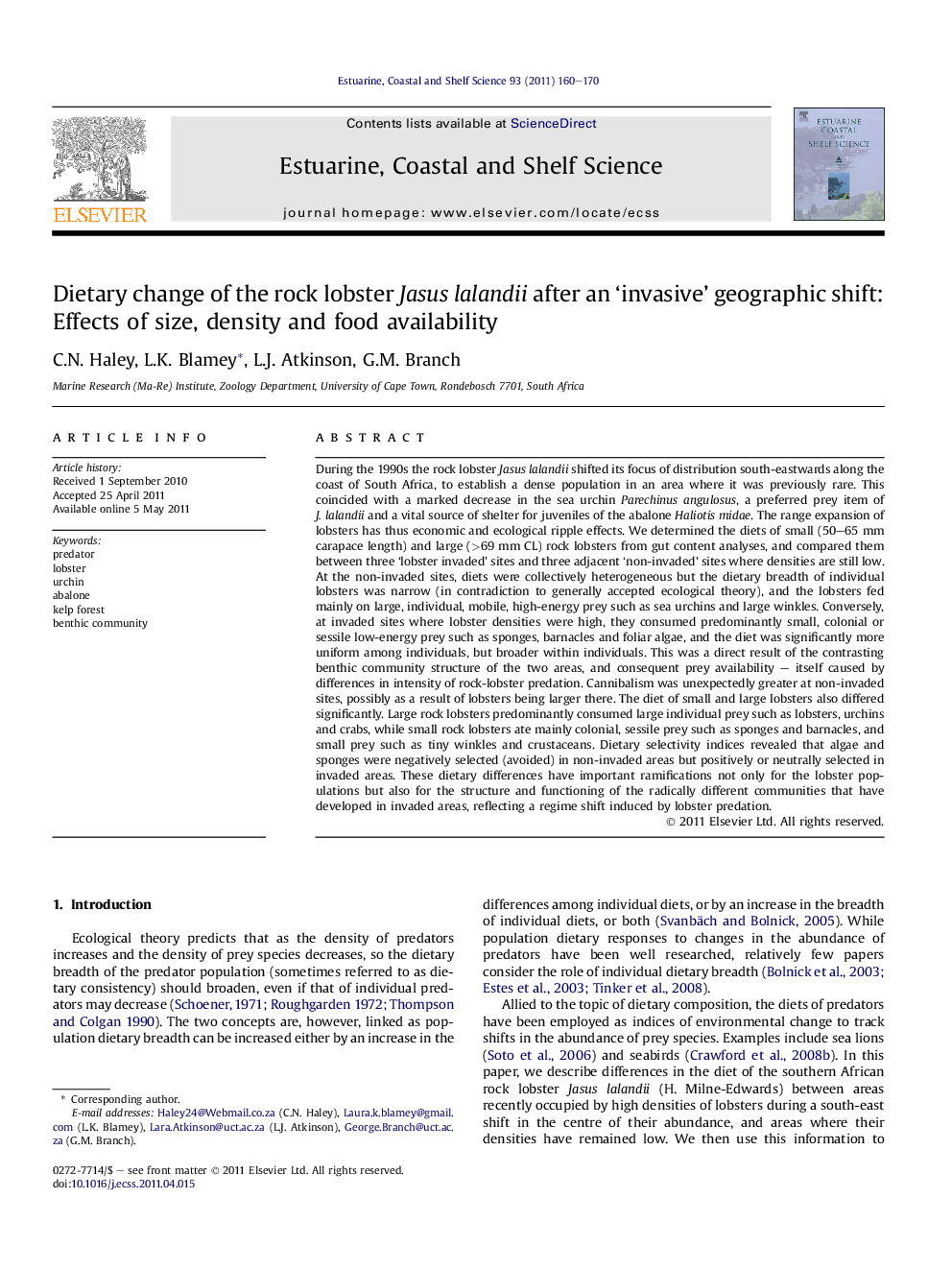| کد مقاله | کد نشریه | سال انتشار | مقاله انگلیسی | نسخه تمام متن |
|---|---|---|---|---|
| 4540624 | 1326679 | 2011 | 11 صفحه PDF | دانلود رایگان |

During the 1990s the rock lobster Jasus lalandii shifted its focus of distribution south-eastwards along the coast of South Africa, to establish a dense population in an area where it was previously rare. This coincided with a marked decrease in the sea urchin Parechinus angulosus, a preferred prey item of J. lalandii and a vital source of shelter for juveniles of the abalone Haliotis midae. The range expansion of lobsters has thus economic and ecological ripple effects. We determined the diets of small (50–65 mm carapace length) and large (>69 mm CL) rock lobsters from gut content analyses, and compared them between three ‘lobster invaded’ sites and three adjacent ‘non-invaded’ sites where densities are still low. At the non-invaded sites, diets were collectively heterogeneous but the dietary breadth of individual lobsters was narrow (in contradiction to generally accepted ecological theory), and the lobsters fed mainly on large, individual, mobile, high-energy prey such as sea urchins and large winkles. Conversely, at invaded sites where lobster densities were high, they consumed predominantly small, colonial or sessile low-energy prey such as sponges, barnacles and foliar algae, and the diet was significantly more uniform among individuals, but broader within individuals. This was a direct result of the contrasting benthic community structure of the two areas, and consequent prey availability – itself caused by differences in intensity of rock-lobster predation. Cannibalism was unexpectedly greater at non-invaded sites, possibly as a result of lobsters being larger there. The diet of small and large lobsters also differed significantly. Large rock lobsters predominantly consumed large individual prey such as lobsters, urchins and crabs, while small rock lobsters ate mainly colonial, sessile prey such as sponges and barnacles, and small prey such as tiny winkles and crustaceans. Dietary selectivity indices revealed that algae and sponges were negatively selected (avoided) in non-invaded areas but positively or neutrally selected in invaded areas. These dietary differences have important ramifications not only for the lobster populations but also for the structure and functioning of the radically different communities that have developed in invaded areas, reflecting a regime shift induced by lobster predation.
► Compared diets of small and large lobsters from high- and low-density lobster areas.
► Diets were significantly different between sizes and areas.
► Diets were heterogeneous at low-density areas and more uniform at high-density areas.
► Differences in diet resulted from contrasting benthic communities.
Journal: Estuarine, Coastal and Shelf Science - Volume 93, Issue 2, 10 June 2011, Pages 160–170